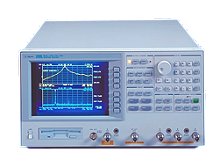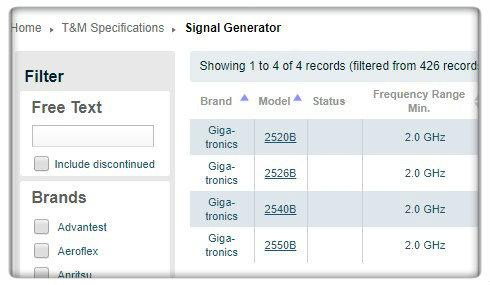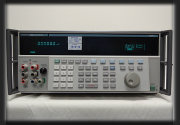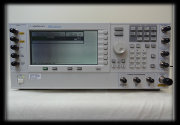The Used-Line D2D-InStock System Demystified
The Used-Line D2D-InStock System is a shortcut to finding equipment that you need urgently.
How does the D2D-InStock System work?
It’s really quite simple.
Really.
Let’s just have a chat about this – forget about technicalities, how-tos, and all the rest.
Instead, we’ll discuss a typical scenario that describes day-to-day business in the marketplace of used (and new) scientific and industrial equipment, including test and measurement, labs, semiconductor manufacturing, and more.
You are a dealer in used Test & Measurement equipment and one bright and sunny morning you get a call from a customer (let’s call him Bob) requesting – actually, demanding – five Agilent (now Keysight) 4396B RF Network/Spectrum/Impedance analyzers, including specific fixtures. Bob is not his usual calm self. He tells you he needs this equipment right now – in fact, yesterday – and can you ship immediately (if not yesterday)?

Keysight (Previously Agilent) 4396B (from Keysight Technologies website)
The 4396B is now obsolete, but that’s Ok, you’ve listed it on Used-Line. But, here’s the rub. You have only one in stock right now, not five!
What to do?!

Fortunately, you have already finished your second cup of coffee of the day, so you are able to think relatively clearly. You know that there just has to be at least four Keysight 4396B analyzers somewhere out there in the marketplace, so who should you call? Certainly not Ghostbusters. (Oops, I’m dating myself!)
So, you get out your lists. Long lists of companies who sell new and used equipment. Phone numbers. Email addresses. All dealers like yourself. You gather your troops, asking everyone to join your search. Everyone is eager to lend a hand. They’re a dedicated crew. Well, that’s nice that you have such amenable staff, but how many hours are you all going to spend emailing and calling everyone you know in the business, trying to find these elusive analyzers?
Wait a minute! What is that new Used-Line D2D InStock System all about? Isn’t there some sort of buddy system I can use to check all over the world for the availability of these Keysight analyzers?
Well, yes, there is! And here’s the really simple part of it all! USED-LINE does all the work for you! Ok, almost all the work. There is just one small task you need to perform to contribute to this workflow in order to make it work:
Tell us what equipment you are looking for!
And that’s it. And here’s the one and only instruction that I have to give you:
Send an email to system1@used-line.com telling us what equipment you urgently need. ![]()
And that’s it! No need for any tables or spreadsheets. Just email us and tell us that you need 4 Keysight 4396B analyzers.
And don’t forget to mention which fixtures or other options you need with the units.
And then what?

You go get another cup of coffee, and when you return to your desk, there is a strong chance that there’ll be an email from Used-Line waiting for you to let you know that there are sellers out there who have the equipment you need IN STOCK! Ok, maybe not if you were looking for a rare machine that was last seen in 1960 (a Tektronix 310, anyone?). But if not right away, if someone is selling what you need, you will hear about it from Used-Line SOON if not immediately, and will find all the information you need to contact the sellers.
No searching required by you. Used-Line does all the work! And so quickly! We also want to make Bob happy!





















 Coffee always inspires! I remembered! The green baize scrubby thingy works wonders! Well, not exactly baize – more like a rough green plasticy sheet that feels gentler than sandpaper but works in the same way. After a thorough search for a piece of the green wonder (the coffee gave me the energy to do this), I found some of this treasure in the drawer at the bottom of a kitchen closet that only opens if all the other doors in the room are closed (Don’t even ask!). A few minutes inside my pot, after taking another rest to recover from the drawer/closet battle, and I could view my own reflection inside my suddenly-like-new pot!
Coffee always inspires! I remembered! The green baize scrubby thingy works wonders! Well, not exactly baize – more like a rough green plasticy sheet that feels gentler than sandpaper but works in the same way. After a thorough search for a piece of the green wonder (the coffee gave me the energy to do this), I found some of this treasure in the drawer at the bottom of a kitchen closet that only opens if all the other doors in the room are closed (Don’t even ask!). A few minutes inside my pot, after taking another rest to recover from the drawer/closet battle, and I could view my own reflection inside my suddenly-like-new pot! 